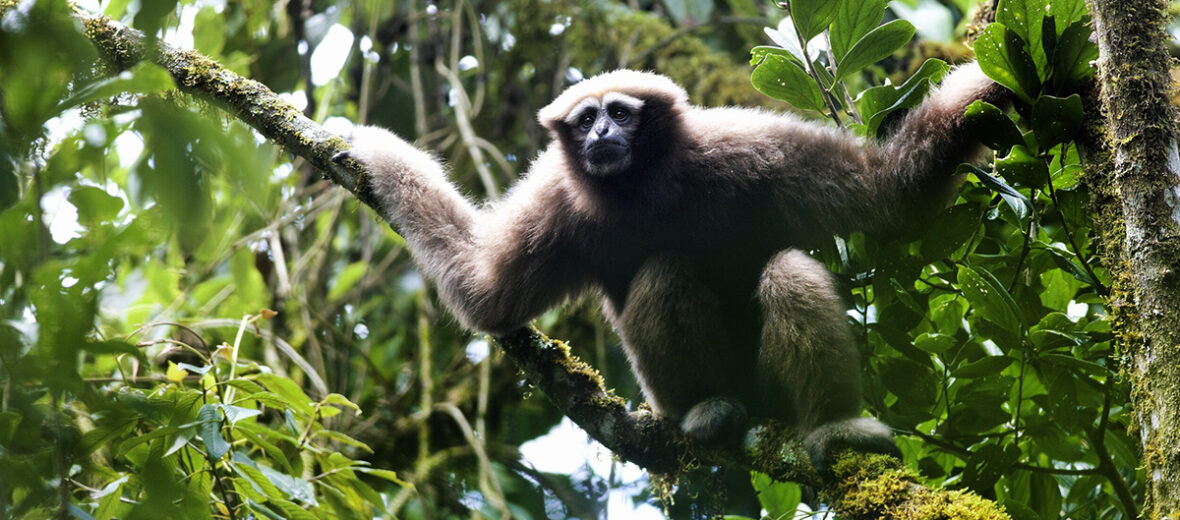
The Skywalker hoolock gibbon, aka Gaoligong hoolock gibbon, hails from China and Myanmar. They dwell in unprotected forest stretches with rough terrain found in primary evergreen habitats, scrublands, mountainous broadleaf forests, semideciduous hill habitats, and montane forests. Unfortunately, these primates face the threats of habitat loss and destruction at the hands of the agricultural and logging industries; hunting, for their meat; trapping, for the exotic pet trade; and have to deal with war and civil unrest. These critters are listed as Endangered by the IUCN. Their populations are also decreasing.
First the Stats…
Scientific name: Hoolock tianxing
Weight: Up to 15 lbs.
Length: Up to 25.6 inches, plus up to a 32 inch tail
Lifespan: Up to 40 years
Now on to the Facts!
1.) They were originally described in January, 2017 in the American Journal of Primatology.
2.) These primates are arboreal (spend their lives in the trees).
3.) Their primary means of movement through the trees is via brachiation (swinging from tree branches via their arms).
4.) Skywalker hoolock gibbons typically change trees to sleep in each night.
5.) During the winter months, they will relocate to lower elevations to stay warm. They will also huddle together in small troops to keep warm.
But wait, there’s more on the Skywalker hoolock gibbon!
6.) Like other primates, they are diurnal (active during the day).
7.) Their specific name tianxing is translated from Pinyin from the Chinese terms 天 (tiān) which means “heaven” and 行 (xíng) which means “movement”.
Did you know…?
You guessed it. These gibbons were named after Luke Skywalker from the Star Wars franchise, seeing as the scientists who described them are fans of the movies.
8.) Shortly after dawn, they will settle into their selected tree and begin singing loudly. Their songs last over 22 minutes.
9.) These critters feast on 36 different plant species. They prefer fruit, then they move onto the leaves, finally the flowers and stems.
10.) During spring and autumn females tend to eat more than males.
But wait, there’s still more on the Skywalker hoolock gibbon!
11.) Mating takes place via 4 steps: Females initiate mating by raising their butts in the air. The male then approaches the female. The male, if accepted by the female, mounts her. Finally, they both rest.
12.) Females undergo up to a 7 month gestation (pregnancy) that yields a single infant.
13.) There are only an estimated 150 wild individuals remaining, to date.
14.) Due to their low fertility rate, it is very difficult, if not nearly impossible for this species to bounce back from their current decline.
Now a Short Skywalker Hoolock Gibbon Video!
Be sure to share & comment below! Also, check out the Critter Science YouTube channel. Videos added regularly!
Want to suggest a critter for me to write about? Let me know here.
Some source material acquired from: Wikipedia & IUCN
Photo credit: Skywalker Gibbons



